Ever feel like lunch is just a boring routine? A healthy charcuterie lunch can change that. Picture a colorful board that’s not only filling but also tasty and nutritious.
A healthy charcuterie lunch is more than just a pretty picture. It’s a smart way to eat well. Studies show that kids love meals that are colorful and varied. By making a charcuterie board, you’re creating a special meal experience.
These lunch ideas are more than just sandwiches. They’re flexible for everyone’s tastes and needs. Whether you’re busy, a parent, or tired of the same old lunch, charcuterie can be your solution.
Table of Contents
Discover more delicious recipes and ideas by visiting our homepage!
Understanding Modern Charcuterie Essentials
Charcuterie has changed a lot from its old days. It’s now a flexible and healthy way to eat. It started in Roman times and got better in 15th century France. Back then, it was all about keeping meat fresh.
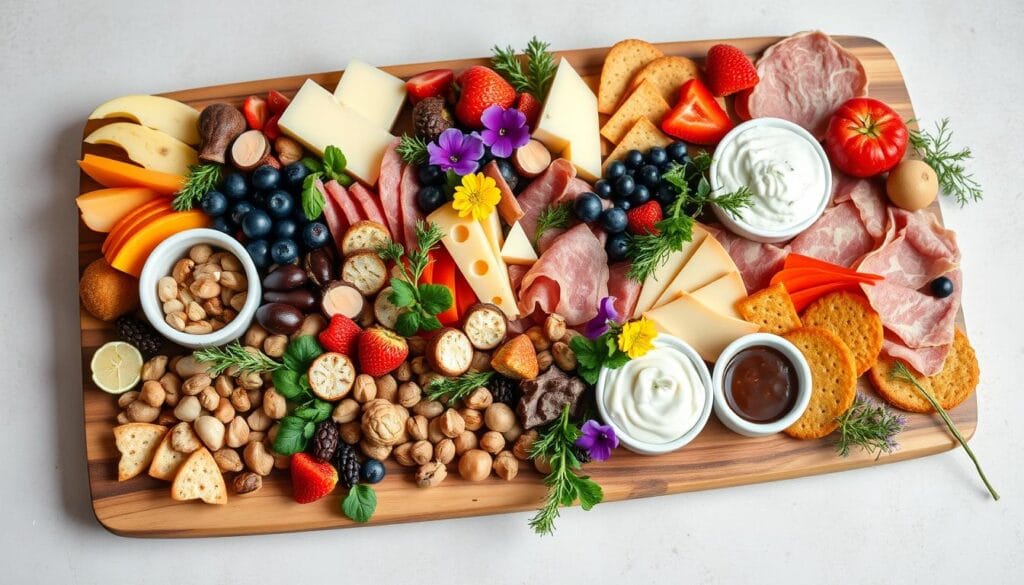
Evolution of Traditional Charcuterie
Today, charcuterie boards focus on balance and health. They used to just have cured meats. Now, they also include fresh veggies and whole grains for a healthier meal.
- Roman meat preservation techniques
- French culinary refinement in the 15th century
- Shift towards healthier ingredient combinations
Benefits of Balanced Lunch Boxes
Making a balanced lunch box keeps your energy up all day. It’s all about mixing lean proteins, fresh veggies, and whole grains. This way, you get a meal that’s filling and full of nutrients.
Nutritional Value Overview
| Component | Nutritional Benefit | Recommended Quantity |
|---|---|---|
| Nutritious Meats | Protein Source | 2-3 varieties |
| Fresh Veggies | Vitamins and Minerals | 3-4 types |
| Whole Grains | Complex Carbohydrates | 1-2 options |
The secret to great modern charcuterie is being flexible. Knowing what each food offers helps you make a meal that’s tasty and good for you.
Healthy Charcuterie Lunch: Building the Perfect Balance
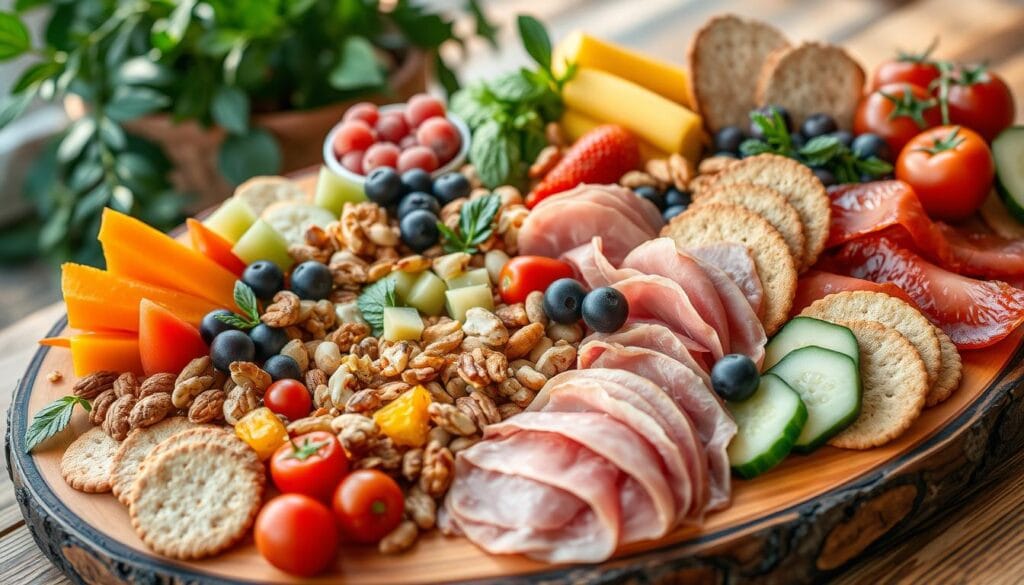
Making a balanced charcuterie lunch is all about choosing the right ingredients. Your meal should have lean proteins, fiber, and tasty condiments. This mix boosts nutrition and makes you feel full.
Here are the main parts of your perfect lunch board:
- Lean proteins for muscle maintenance
- Fresh vegetables providing dietary fiber
- Whole grain options for sustained energy
- Healthy fats for nutritional completeness
Protein is very important in your lunch. Choose from:
- Grilled chicken breast
- Turkey slices
- Hard-boiled eggs
- Cottage cheese
When you make your charcuterie lunch, remember to balance it. Try to have a variety and not too much of anything. This way, you get all the nutrients you need without feeling too full.
| Nutrient Category | Recommended Serving | Benefits |
|---|---|---|
| Lean Proteins | 3-4 oz | Muscle maintenance, satiety |
| Dietary Fiber | 5-7 g | Digestive health, sustained energy |
| Healthy Fats | 1-2 tbsp | Nutrient absorption, flavor enhancement |
Add tasty condiments like mustard, herb-infused olive oil, or light vinaigrettes. They make your lunch taste great while keeping it healthy.
Essential Components for a Nutritious Board
Making a healthy charcuterie board is all about picking the right ingredients. It turns this classic snack into a nutritious meal. By balancing proteins, fresh fruits and veggies, and whole grains, you create a meal that’s tasty and good for you.
Lean Protein Options
Choosing the healthiest charcuterie meat is key. Look for lean proteins that are rich in nutrients but low in fat. This choice greatly affects whether your charcuterie board is a healthy lunch.
- Grilled chicken breast: Low in fat, high in protein
- Sliced turkey: Nitrate-free options recommended
- Wild-caught salmon strips
- Plant-based protein alternatives like tofu
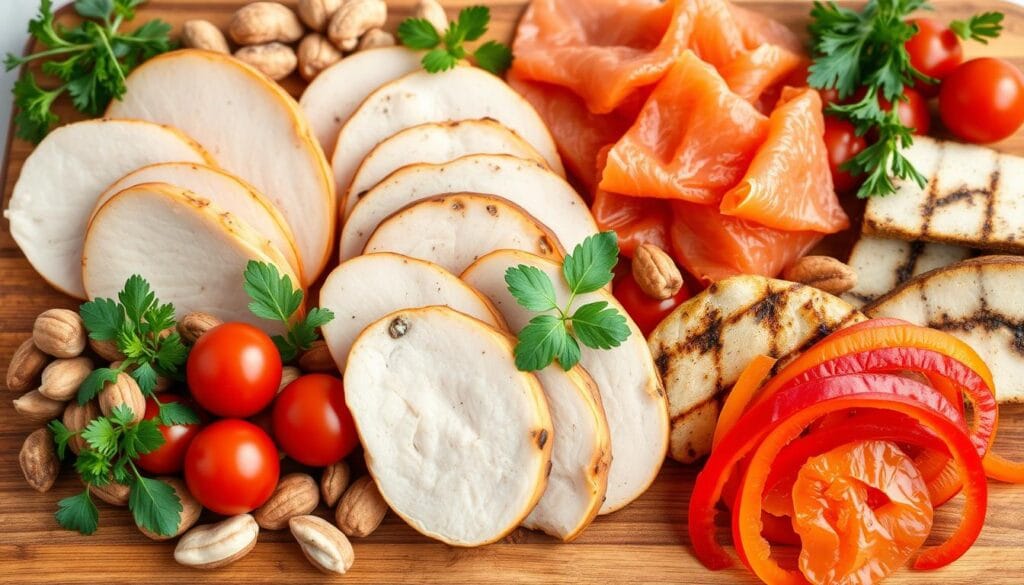
Fresh Produce Selection
Adding colorful fruits and veggies boosts both nutrition and looks. Choose a variety of colors and textures to make the board visually appealing.
| Vegetable Options | Fruit Choices |
|---|---|
| Cucumber slices | Fresh berries |
| Mini bell peppers | Apple wedges |
| Snap peas | Orange segments |
Whole Grain Additions
Whole grains add fiber and energy. Pick crackers and bread that match your protein and produce. They should also boost the nutritional value of your board.
- Seed-based crackers
- Whole wheat pita chips
- Quinoa crisps
- Sprouted grain bread
With the right ingredients, a charcuterie board can become a balanced, nutritious lunch. It will keep you full and support your healthy eating goals.
Clean Ingredients and Smart Substitutions
Making a tasty charcuterie lunch begins with clean ingredients. Your food choices can turn a simple meal into a nutritional powerhouse. Clean ingredients mean picking foods that are minimally processed and recognizable.
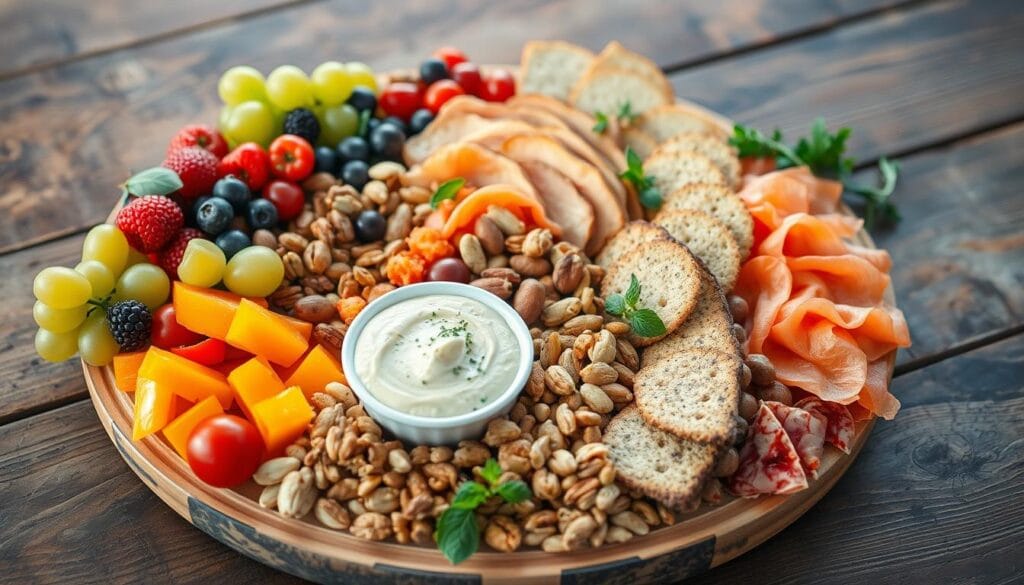
When you’re building your charcuterie board, focus on the quality of your ingredients. Look for foods with short, easy-to-understand ingredient lists. Some packaged foods are actually quite healthy.
- Avoid items with lengthy, complex ingredient lists
- Choose plant-based snacks with minimal processing
- Select whole food alternatives to processed options
Smart substitutions can make your lunch better while keeping it tasty. For instance, swap traditional deli meats for plant-based protein alternatives. Vegan meat options provide tasty ways to enjoy favorite flavors without losing nutrition.
Here are some clean ingredient tips for your charcuterie lunch:
- Opt for whole-grain crackers instead of refined white varieties
- Choose fresh fruits over sugary dried alternatives
- Select minimally processed cheeses and spreads
Pro tip: Read labels carefully. The term “natural” doesn’t guarantee a product is unprocessed. Your aim is to make a balanced, nutritious lunch that’s both tasty and healthy.
Mediterranean-Inspired Healthy Board
Creating a Mediterranean-inspired charcuterie board is a great way to serve lunch. It combines fresh ingredients, rich flavors, and nutrition. This makes your lunchtime meal exciting and healthy.
Mediterranean cuisine is perfect for a healthy lunch board. It offers a mix of flavors and nutrients. This makes lunch both tasty and good for you.
Fresh Mediterranean Components
- Kalamata olives
- Cherry tomatoes
- Cucumber slices
- Roasted red peppers
- Artichoke hearts
Protein-Rich Mediterranean Options
Protein is key when choosing what to serve for lunch with a charcuterie board. Mediterranean foods offer great protein sources:
- Hummus (8 oz serving)
- Feta cheese
- Grilled chicken strips
- Tzatziki dip
Herb and Spice Combinations
Boost your Mediterranean board with herbs and spices. They add flavor without extra calories:
| Herb/Spice | Flavor Profile | Recommended Pairing |
|---|---|---|
| Oregano | Earthy, robust | Feta, olives |
| Mint | Fresh, cooling | Cucumber, tzatziki |
| Za’atar | Herbal, tangy | Grilled meats, vegetables |
Your Mediterranean-inspired lunch board is ready in 5-10 minutes. It’s a quick and nutritious meal that brings Mediterranean flavors to your table.
Protein-Packed Power Board
Making a protein-packed charcuterie board turns your lunch into a nutritional powerhouse. Lean proteins are key to balanced meals that keep you full and energized. Your lunch can help keep your muscles strong and your energy up.
- Chomps Turkey Sticks (nitrate-free and antibiotic-free)
- Sliced grilled chicken breast
- Hard-boiled eggs
- Cubed lean ham
- Mozzarella cheese chunks
Choosing the right ingredients is important for balanced meals. Add items that boost nutrition and texture. Crisp cucumber slices, fresh raspberries, and almond crackers make your protein board amazing.
Pro tip: Mix up your protein sources and sides. Include both animal and plant-based proteins for a full nutritional profile. Your lunch should fuel your day and support your health goals.
| Protein Source | Protein per Serving | Additional Benefits |
|---|---|---|
| Turkey Stick | 6g | Low sodium, no antibiotics |
| Hard-boiled Egg | 7g | Rich in vitamin D |
| Mozzarella | 8g | Calcium-rich |
Your protein-packed board is more than food—it’s a health investment. By focusing on lean proteins and balanced meals, you boost your energy and performance.
Plant-Based Charcuterie Innovation
Plant-based options are changing the way we think about midday meals. Now, your lunch can be both healthy and beautiful. This is thanks to new, exciting plant-based snacks that break the mold of traditional lunches.
Vegetarian Protein Sources
Building a tasty plant-based charcuterie board begins with choosing great protein sources. Pairing fresh veggies with nutrient-rich alternatives makes your lunch both filling and good for you.
- Legume-based proteins (chickpeas, lentils)
- Nut clusters and seed mixes
- Tofu and tempeh slices
- Plant-based protein spreads
Creative Plant-Based Pairings
Make your plant-based snacks stand out by mixing different flavors and textures. The goal is to create a lunch that you’ll remember.
| Protein Source | Complementary Pairing | Flavor Profile |
|---|---|---|
| Smoked Tofu | Pickled Vegetables | Tangy & Robust |
| Cashew Cheese | Fig Compote | Creamy & Sweet |
| Seitan Slices | Herb Mustard | Savory & Zesty |
More and more charcuterie boards are now plant-based, about 15% of them. By 2025, experts say 30% of charcuterie will be plant-based. This shows how lunch is changing in exciting ways.
Portion Control and Assembly Tips
Creating a perfect charcuterie board is all about the 3-3-3 rule. This simple rule helps you make a balanced and tasty lunch. It meets your nutritional needs and satisfies your taste buds.
The 3-3-3 rule for charcuterie board composition breaks down into three key components:
- 3 Protein Sources: Choose lean meats or plant-based proteins
- 3 Cheese Varieties: Select different textures and flavor profiles
- 3 Accompaniments: Add fruits, nuts, and fresh vegetables
Controlling portions is key for a healthy diet. Studies show that how you arrange your food on a plate matters a lot:
| Plate Composition | Recommended Percentage | Benefit |
|---|---|---|
| Non-starchy Vegetables | 50% | Increases nutrient diversity |
| High-Protein Foods | 25% | Meets daily protein requirements |
| High-Fiber Carbohydrates | 25% | Contributes to fiber goals |
When making your charcuterie lunch, remember a few tips. Use small plates or containers to control portions. Mix colors and textures for a beautiful layout. This makes your meal more enjoyable.
Pro tip: Prepare your charcuterie board the night before. This saves time and makes lunch less stressful. Waiting 2-4 hours between meals helps control calories and avoid overeating.
Storage and Meal Prep Strategies
Preparing balanced meals with clean ingredients needs smart storage and meal prep. Your charcuterie lunch can stay fresh and tasty with the right storage and organization.
Smart Container Selection
Choosing the right containers is key for keeping your charcuterie ingredients fresh. Look for airtight, compartmentalized containers. They keep different parts separate and fresh. For best results, store them in airtight containers for 2-3 days.
- Use leak-proof containers with multiple sections
- Select BPA-free plastic or glass containers
- Choose containers with tight-sealing lids
Food Safety Guidelines
Keeping food safe is vital when making balanced meals. Keep your charcuterie ingredients cold, like meats and cheeses. It’s best to keep them chilled if they’re out for a long time.
- Store perishable items below 40°F
- Use ice packs for transportation
- Consume within recommended time frames
When prepping your charcuterie lunch, use clean ingredients and control portions. Pro tip: Prepare ingredients ahead and store them separately. This keeps them fresh and makes things easier.
Seasonal Variations and Ingredients
Creating delicious charcuterie lunches is an exciting adventure with seasonal ingredients. Your board can change with the seasons, showing off the best fresh veggies and whole grains all year.
Seasonal eating has many benefits. You get:
- Maximum nutritional value
- Enhanced flavor profiles
- Support for local agriculture
- Cost-effective meal planning
Here are some tips for your charcuterie board:
| Season | Fresh Veggies | Whole Grains |
|---|---|---|
| Spring | Asparagus, radishes, spring peas | Quinoa, barley |
| Summer | Cherry tomatoes, cucumber, bell peppers | Farro, bulgur |
| Fall | Roasted butternut squash, Brussels sprouts | Wild rice, millet |
| Winter | Roasted root vegetables, kale | Wheat berries, amaranth |
Pro tip: Always choose locally grown, fresh ingredients for the best flavor and nutrition in your charcuterie lunch.
Customization for Dietary Preferences
Creating a charcuterie lunch that meets diverse dietary needs is key. With 80% of clients seeking custom menus, it’s vital to know how to serve lunch with a charcuterie board. This ensures balanced meals for everyone.
Your charcuterie lunch can fit various dietary preferences without losing taste or nutrition. Let’s look at flexible options for different dietary needs:
- Gluten-Free Options
- Replace wheat crackers with rice crackers
- Use gluten-free cured meats
- Select certified gluten-free cheeses
- Vegetarian Alternatives
- Substitute meat with plant-based proteins
- Include marinated tofu
- Add roasted vegetable spreads
- Vegan Adaptations
- Use nut-based cheese alternatives
- Include seed-based protein sources
- Select dairy-free dips and spreads
The secret to a great customized charcuterie lunch is being flexible. By providing many ingredient options, you can make a board that meets different dietary needs. This keeps the meal nutritious and balanced.
Also, 90% of catered meals now meet multiple dietary preferences. Your lunch can be both welcoming and tasty. This way, everyone gets a meal that’s just right for them.
Conclusion
Making a healthy charcuterie lunch is more than just eating. It’s an art that mixes nutrition, creativity, and wellness. By using whole-grain crackers, plant-based proteins, and fresh veggies, you’re doing more than just eating. You’re investing in your health.
Healthy charcuterie lunches are flexible, letting you tailor your meal to your liking. You can choose Mediterranean-style boards or go for protein-rich options. The goal is to make a meal that tastes great and is good for you. Studies show that eating foods high in fiber can make you feel full for longer.
Your journey with charcuterie is just starting. Every board you make is a chance to try new flavors and textures. You can mix traditional items with plant-based ones, opening up a world of possibilities for mindful eating and creativity in the kitchen.
Think of a charcuterie lunch as a celebration of health and taste. It’s a chance to enjoy good food and take care of yourself. So, keep exploring, trust your taste, and enjoy the journey of finding nutritious lunches that keep you energized and happy.
FAQ
Is a charcuterie board a healthy lunch?
A charcuterie board can be healthy if you pick the right ingredients. Choose lean proteins, fresh veggies, whole grains, and less processed meats. Pick high-quality, clean foods and keep portion sizes right for a balanced meal that keeps you going all day.
What is the healthiest charcuterie meat?
The healthiest meats are lean and not too processed. Look for turkey, chicken breast, and prosciutto. Choose meats low in saturated fats and without too many preservatives. Opt for organic or grass-fed options for better nutrition and less health risks.
What is the 3-3-3 rule for a charcuterie board?
The 3-3-3 rule is about having 3 meats, 3 cheeses, and 3 accompaniments. For a healthier board, pick lean meats, low-fat cheeses, and healthy sides like veggies, whole grain crackers, and fruit-based spreads.
What can I serve with a charcuterie board for lunch?
Pair your charcuterie board with healthy sides like:
– Fresh veggie sticks
– Whole grain crackers or bread
– Hummus or Greek yogurt dips
– Mixed nuts and seeds
– Fresh fruits
– Roasted veggie spreads
– Quinoa or grain-based salads
How can I make a vegetarian charcuterie board?
For a plant-based board, use protein-rich options like:
– Hummus
– Marinated tofu
– Roasted chickpeas
– Nut-based cheeses
– Edamame
– Roasted veggie spreads
– Seed-based protein balls
How do I ensure food safety when preparing a charcuterie lunch?
To keep food safe:
– Use clean, separate containers for each item
– Keep cold items chilled
– Use ice packs for transport
– Eat within 2-4 hours
– Wash hands and tools well
– Choose fresh, quality ingredients
– Store meats and cheeses correctly
Can a charcuterie lunch help with weight management?
Yes, a well-thought-out charcuterie lunch can aid in weight management. It offers balanced meals, lean proteins, and fiber-rich veggies and grains. Avoid processed and high-calorie foods for a healthier option.
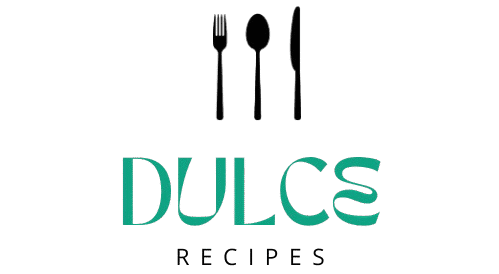
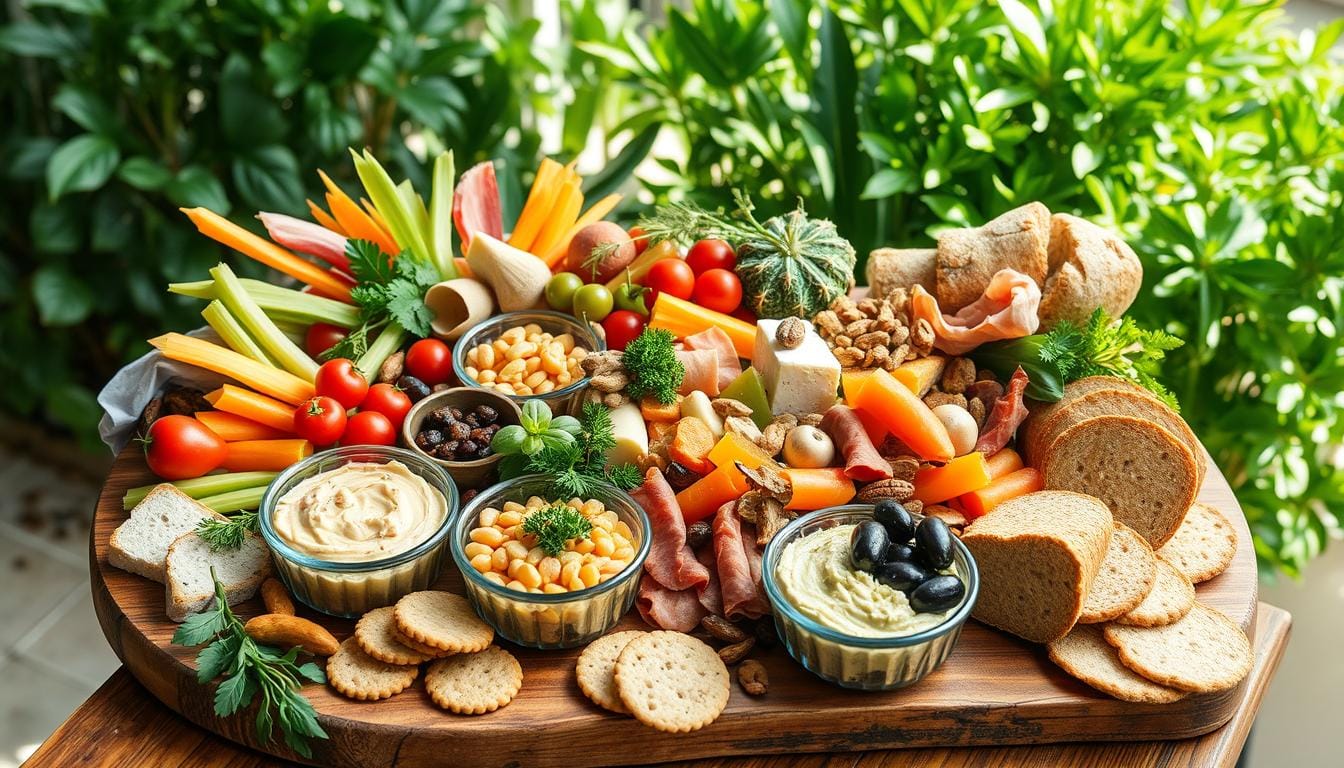
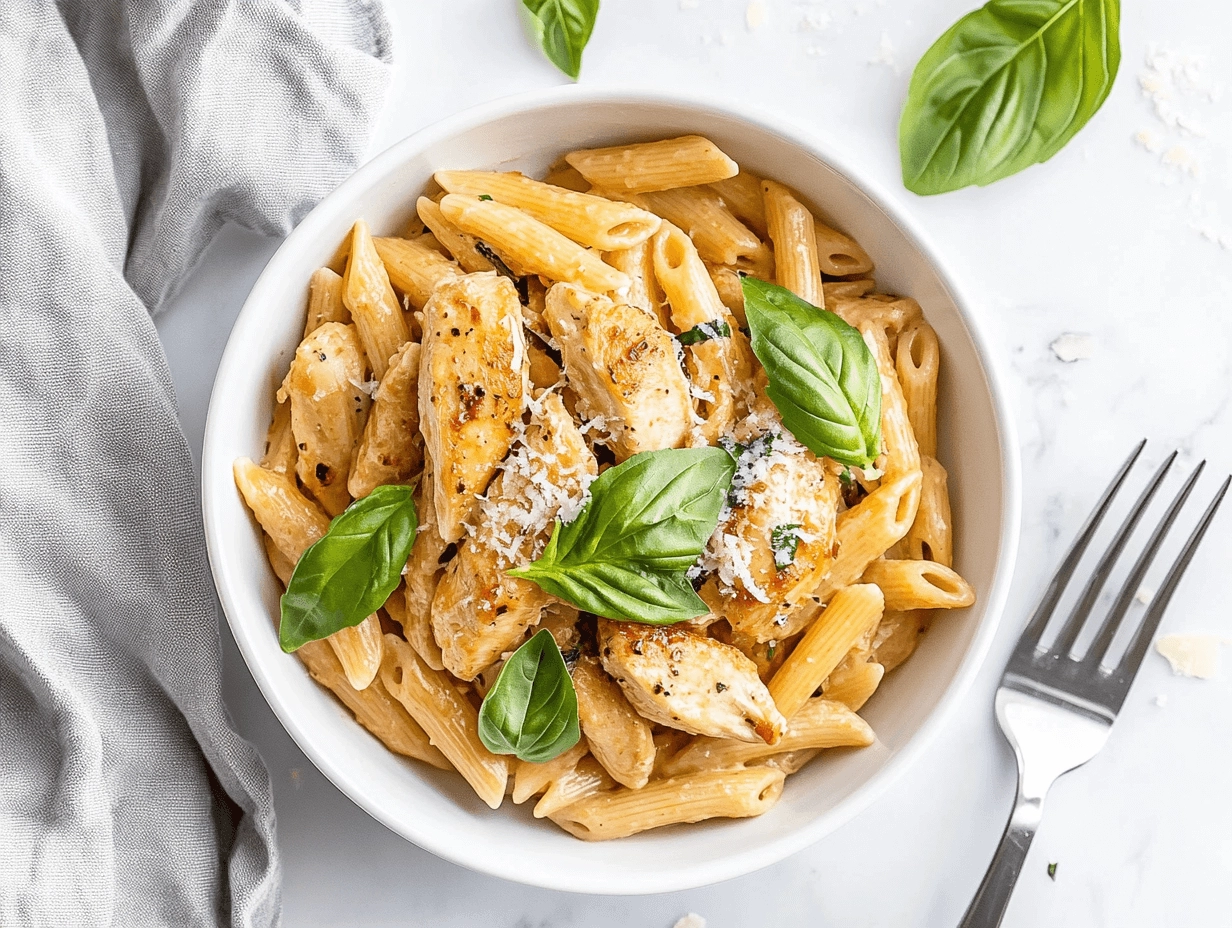
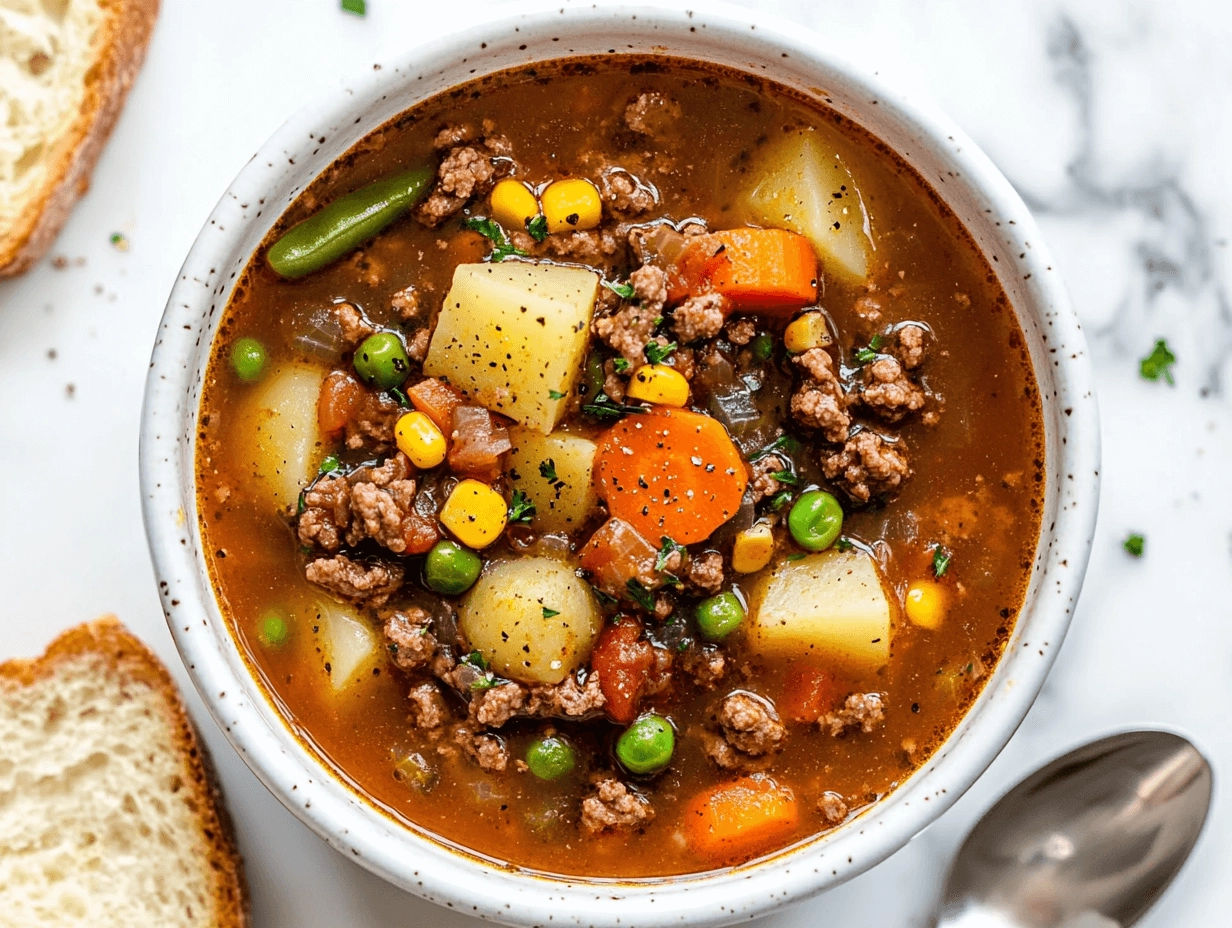
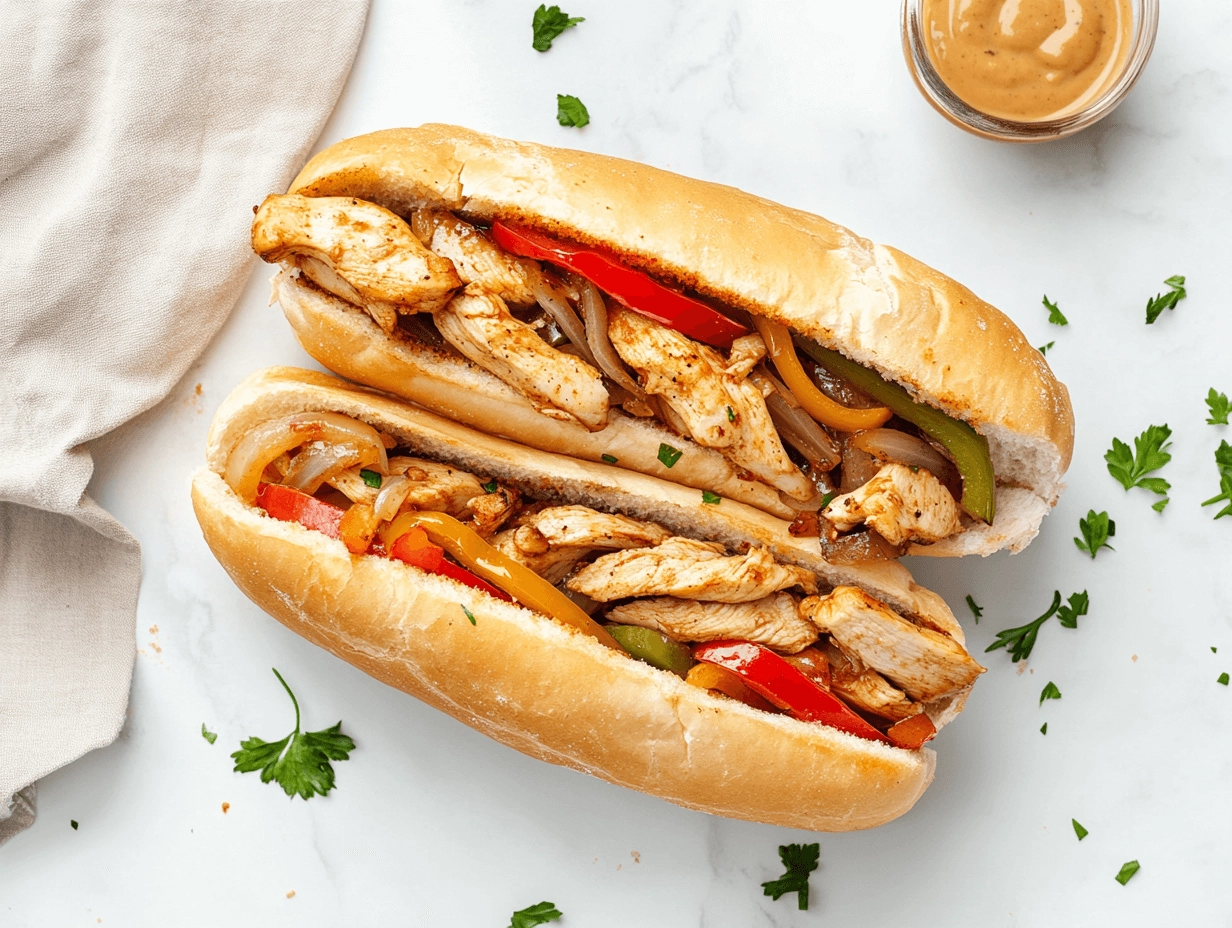

1 thought on “5 Healthy Charcuterie Lunch Ideas for a Perfect Midday Meal”